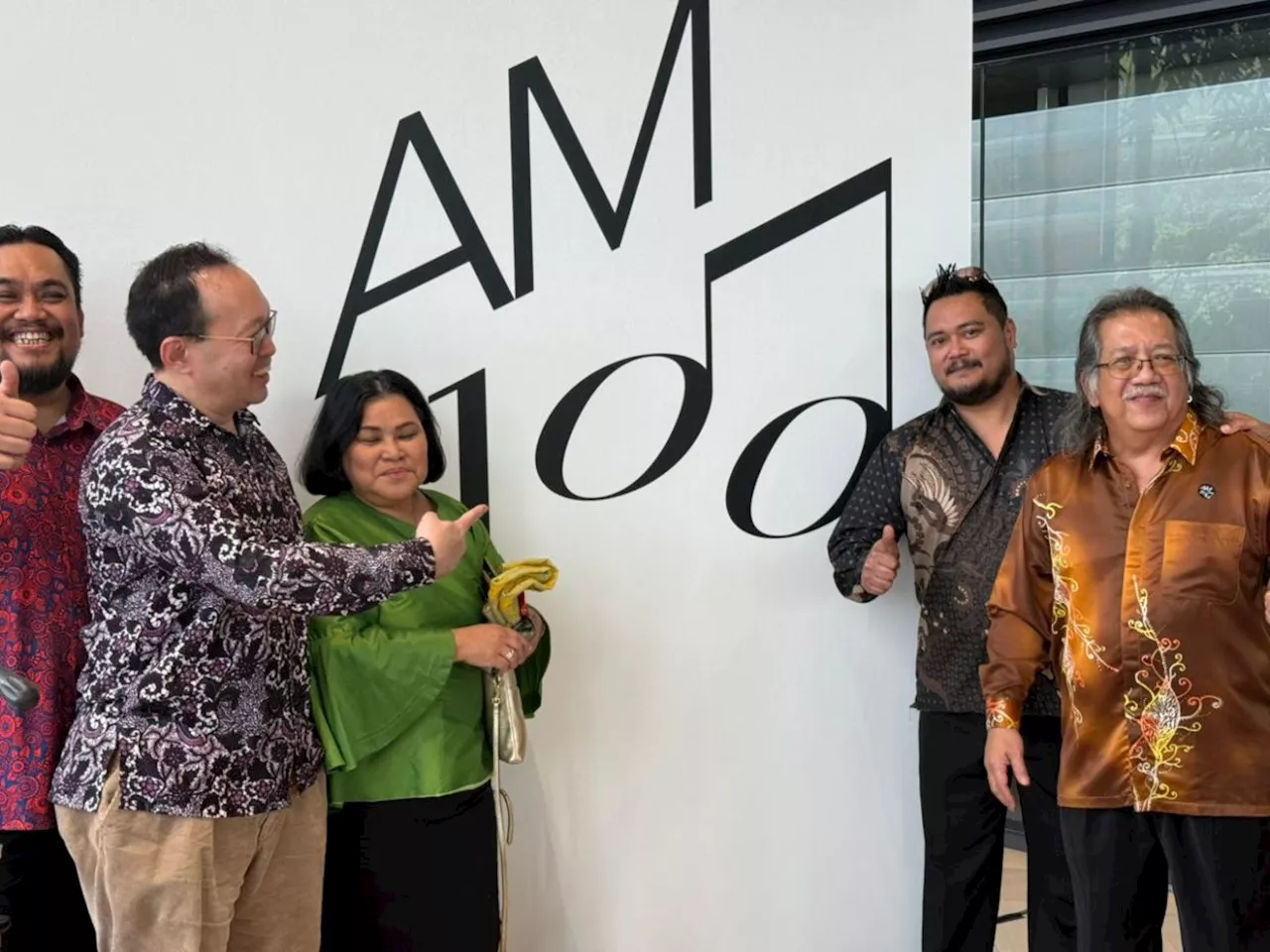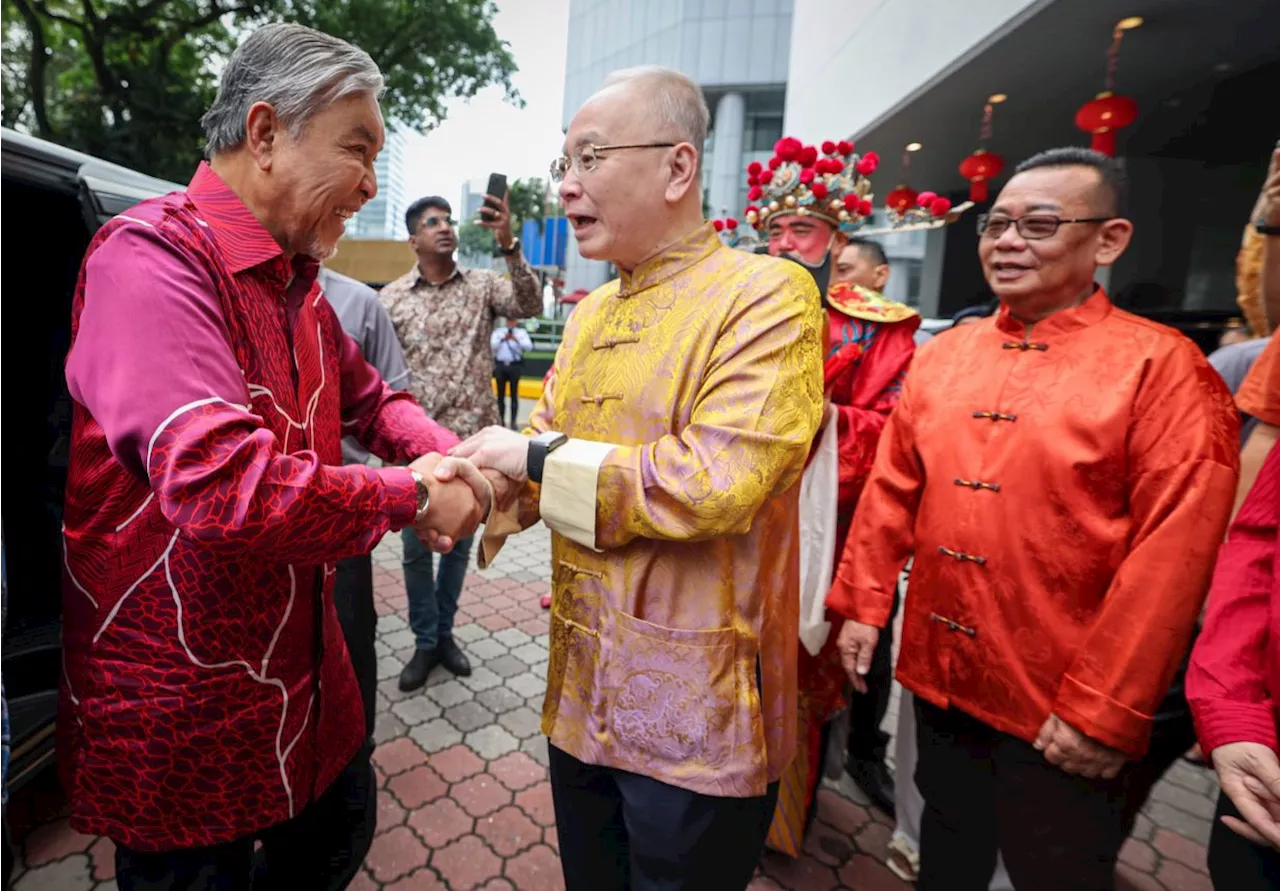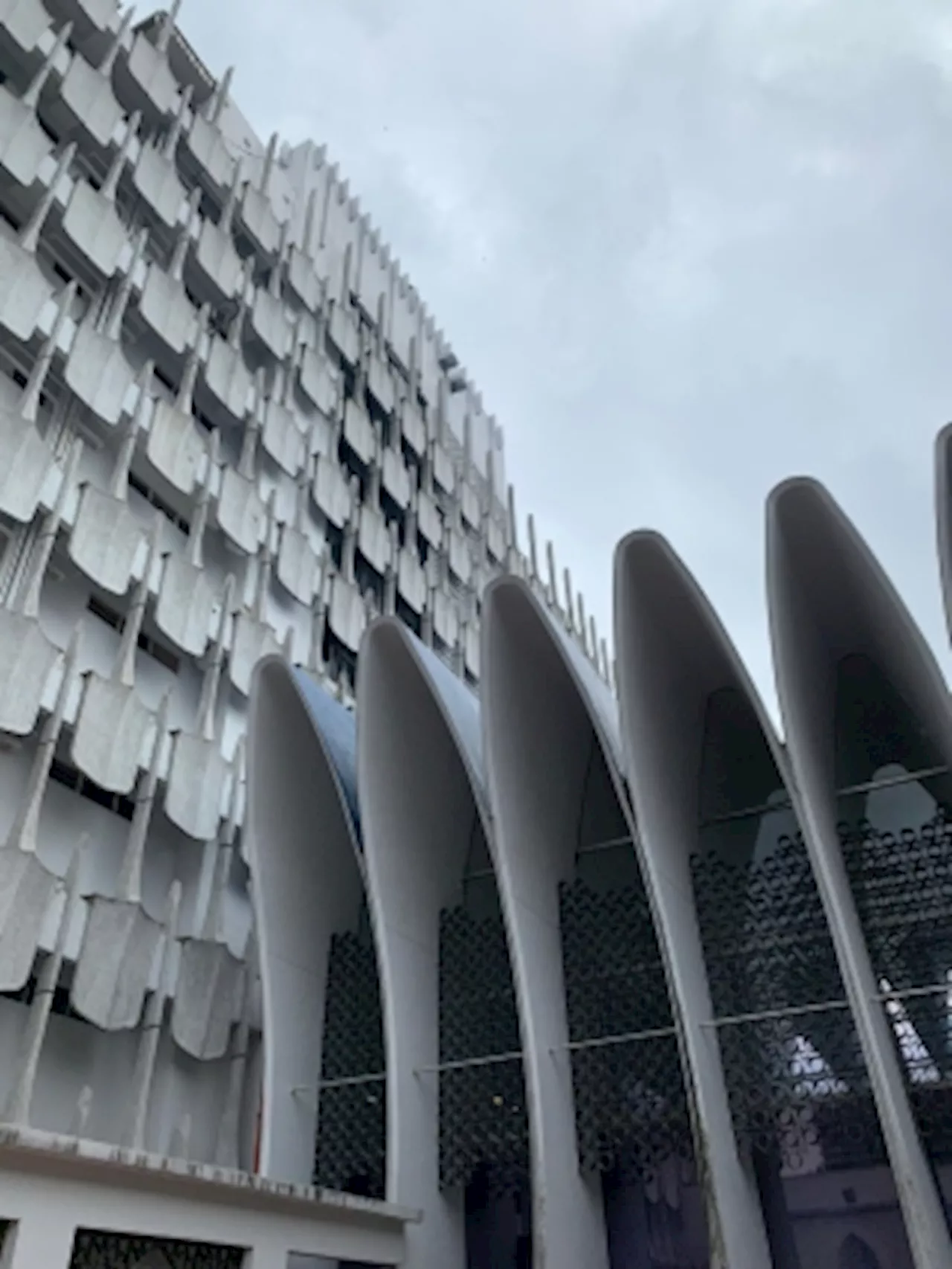This article explores the history and architectural significance of Wisma Angkasapuri, a landmark broadcasting center in Malaysia.
Every year on February 13, World Radio Day is celebrated globally to recognize radio's role in shaping societies, preserving cultures, and fostering communication. In Malaysia, this occasion carries even greater significance, not only as a tribute to the nation's broadcasting heritage but also as a reflection of the architectural legacy of Wisma Angkasapuri — a landmark that has long stood as the heart of national media and cultural identity.
Perched atop Putra Hill and overlooking the Federal Highway, Wisma Angkasapuri, commonly known as Wisma RTM, is more than just a broadcasting hub. As travellers pass along the highway, its bold and imposing silhouette commands attention, representing Malaysia's post-independence architectural aspirations. Designed by Canadian architect Nicholas James Pappas, Angkasapuri exemplifies Modern Regional Architecture, a style that integrates international modernism with local climatic and cultural considerations. Wisma Angkasapuri features terrazzo concrete shield-like shading devices and a striking barrel vault roof facade.Malaysia's broadcasting journey, however, predates Angkasapuri. Established in 1946, Radio Malaya was initially based in Singapore before relocating to Kuala Lumpur in 1959. It operated from a temporary studio on Jalan Young before moving to Federal House near the Sultan Abdul Samad Building. As the demand for broadcasting grew, the need for a dedicated, state-of-the-art facility became clear, leading to the construction of Angkasapuri between 1966 and 1968. The name Angkasapuri, derived from “angkasa” (space) and “puri” (city), symbolizes its role as a “city in the sky,” constantly transmitting the nation’s voices. With its monumental form and functional layout, the building reflects the era’s optimism, embracing modern technology while adapting to Malaysia’s tropical climate. Angkasapuri’s design incorporates elements of tropical architecture, featuring large overhangs, open corridors, and strategic orientation to enhance natural ventilation. Its modernist concrete façade is equipped with sun-shading devices inspired by the rebab, a traditional musical instrument, offering both aesthetic appeal and protection against Malaysia’s humid and rainy climate. Built in two phases, the complex houses radio and television studios, technical facilities, offices, and a 1,000-seat auditorium designed for live broadcasts. At its core was the vision of Malaysia’s first Prime Minister, Tunku Abdul Rahman Putra Al-Haj, who laid its foundation stone on December 12, 1966. His goal was to create a facility that would serve as a national unifier, disseminating information, promoting cultural understanding, and fostering a shared national identity.The completion of Angkasapuri in 1968 marked a turning point in Malaysia’s broadcasting history, paving the way for rapid media development. Recognizing the need for modernization, Angkasapuri underwent a significant transformation with the development of Angkasapuri Kota Media, a state-of-the-art broadcasting facility completed in 2021. Designed by GDP Architects, this RM860 million project was inaugurated on October 26, 2022, by the ninth Prime Minister, Datuk Seri Ismail Sabri Yaakob, ushering in a new era of architectural and technological innovation. The new Angkasapuri Media City is a contemporary landmark that represents the future of digital broadcasting. While maintaining the legacy of its predecessor, Angkasapuri Kota Media embraces contemporary architectural trends and cutting-edge facilities. It features three state-of-the-art television studios (M1, M2, and M3), a music recording studio, and a 1,000-seat auditorium. The complex also includes an 18-floor office tower, advanced television and radio studios, and one of the longest escalators in any Malaysian government building, spanning 34.5 metres. This new complex stands as a testament to Malaysia’s commitment to digital broadcasting, ensuring that its national media infrastructure remains at the forefront of the industry. As Malaysia celebrates World Radio Day, Angkasapuri stands as a reminder of the deep connection between architecture and media in the nation’s history. Its evolution from a 1960s modernist icon to a 21st-century digital media hub exemplifies Malaysia’s ability to balance heritage preservation with technological progress. More than just a building, Angkasapuri remains a cultural and architectural landmark, embodying the nation’s broadcasting legacy and its vision for the future. In an era of rapid technological change, radio continues to be a vital medium, reaching diverse communities and preserving linguistic and cultural heritage. Angkasapuri, with its historical and architectural significance, remains a powerful symbol of Malaysia’s resilience and commitment to progress
Media History ANGKASAPURI ARCHITECTURE MALAYSIA BROADCASTING RADIO HISTORY MODERN REGIONAL ARCHITECTURE DIGITAL BROADCASTING WORLD RADIO DAY
Malaysia Latest News, Malaysia Headlines
Similar News:You can also read news stories similar to this one that we have collected from other news sources.
 Tan Sri Ahmad Merican Celebrates 100th Birthday: A Musical Legacy for MalaysiaTan Sri Ahmad Merican, the renowned Malaysian music pioneer who introduced local tunes to the region and the world, recently celebrated his 100th birthday. Known for his patriotic songs, particularly 'Tanah Pusaka,' Merican's contributions to broadcasting and music have shaped Malaysia's national identity. He was instrumental in the development of Radio Malaya and played a key role in Malaysia's broadcasting history.
Tan Sri Ahmad Merican Celebrates 100th Birthday: A Musical Legacy for MalaysiaTan Sri Ahmad Merican, the renowned Malaysian music pioneer who introduced local tunes to the region and the world, recently celebrated his 100th birthday. Known for his patriotic songs, particularly 'Tanah Pusaka,' Merican's contributions to broadcasting and music have shaped Malaysia's national identity. He was instrumental in the development of Radio Malaya and played a key role in Malaysia's broadcasting history.
Read more »
 Mercedes-Benz Malaysia and Malaysia Aviation Group Partner for Exclusive KLIA Terminal Transfer ServiceMercedes-Benz Malaysia and Malaysia Aviation Group have launched a strategic collaboration to provide an exclusive private terminal transfer service for eligible Malaysia Airlines passengers at Kuala Lumpur International Airport (KLIA) Terminal 1. The service, available until the end of 2025, will cater to Enrich Platinum, Business Suite and Business Class passengers, offering a premium experience compared to the standard shuttle bus service.
Mercedes-Benz Malaysia and Malaysia Aviation Group Partner for Exclusive KLIA Terminal Transfer ServiceMercedes-Benz Malaysia and Malaysia Aviation Group have launched a strategic collaboration to provide an exclusive private terminal transfer service for eligible Malaysia Airlines passengers at Kuala Lumpur International Airport (KLIA) Terminal 1. The service, available until the end of 2025, will cater to Enrich Platinum, Business Suite and Business Class passengers, offering a premium experience compared to the standard shuttle bus service.
Read more »
 Mercedes-Benz Malaysia and Malaysia Airlines Partner for Exclusive Private Terminal Transfer ServiceMercedes-Benz Malaysia and Malaysia Aviation Group have launched a strategic collaboration offering an exclusive private terminal transfer service to Malaysia Airlines' Enrich Platinum, Business Suite, and Business Class passengers at Kuala Lumpur International Airport (KLIA) Terminal 1. Passengers will utilize a fleet of Mercedes-Benz vehicles for seamless transfers between the satellite and main terminals, enhancing the travel experience for eligible customers.
Mercedes-Benz Malaysia and Malaysia Airlines Partner for Exclusive Private Terminal Transfer ServiceMercedes-Benz Malaysia and Malaysia Aviation Group have launched a strategic collaboration offering an exclusive private terminal transfer service to Malaysia Airlines' Enrich Platinum, Business Suite, and Business Class passengers at Kuala Lumpur International Airport (KLIA) Terminal 1. Passengers will utilize a fleet of Mercedes-Benz vehicles for seamless transfers between the satellite and main terminals, enhancing the travel experience for eligible customers.
Read more »
 Monash University Malaysia Leads Contract Law Reform in MalaysiaMonash University Malaysia, in collaboration with the National University of Malaysia (UKM), is spearheading a project to modernize Malaysia's Contract Act 1950 (Act 136). A committee led by Justice Datuk Vazeer Alam Mydin Meera aims to address outdated definitions, tackle complexities of modern transactions, and ensure the legal framework aligns with the digital age. The university's Centre for Commercial Law and Regulatory Studies – Malaysia Hub (CLARS-MH) is coordinating the review process, leveraging its expertise in commercial law and commitment to strengthening Malaysia's legal and commercial frameworks.
Monash University Malaysia Leads Contract Law Reform in MalaysiaMonash University Malaysia, in collaboration with the National University of Malaysia (UKM), is spearheading a project to modernize Malaysia's Contract Act 1950 (Act 136). A committee led by Justice Datuk Vazeer Alam Mydin Meera aims to address outdated definitions, tackle complexities of modern transactions, and ensure the legal framework aligns with the digital age. The university's Centre for Commercial Law and Regulatory Studies – Malaysia Hub (CLARS-MH) is coordinating the review process, leveraging its expertise in commercial law and commitment to strengthening Malaysia's legal and commercial frameworks.
Read more »
 Carlsberg Malaysia Clinches Multiple Wins At Malaysia’s “People’s Choice” Brand AwardsCarlsberg Malaysia's award sweep proves consumer trust remains their most valuable brew.
Carlsberg Malaysia Clinches Multiple Wins At Malaysia’s “People’s Choice” Brand AwardsCarlsberg Malaysia's award sweep proves consumer trust remains their most valuable brew.
Read more »
 Visit Malaysia 2026: Malaysia hopes more Chinese tourists arrivals, says ZahidMANILA: Three more Chinese vessels, including the so-called “monster ship,” were detected near Bajo de Masinloc as the Philippine Coast Guard (PCG) continues its monitoring efforts off Zambales.
Visit Malaysia 2026: Malaysia hopes more Chinese tourists arrivals, says ZahidMANILA: Three more Chinese vessels, including the so-called “monster ship,” were detected near Bajo de Masinloc as the Philippine Coast Guard (PCG) continues its monitoring efforts off Zambales.
Read more »
